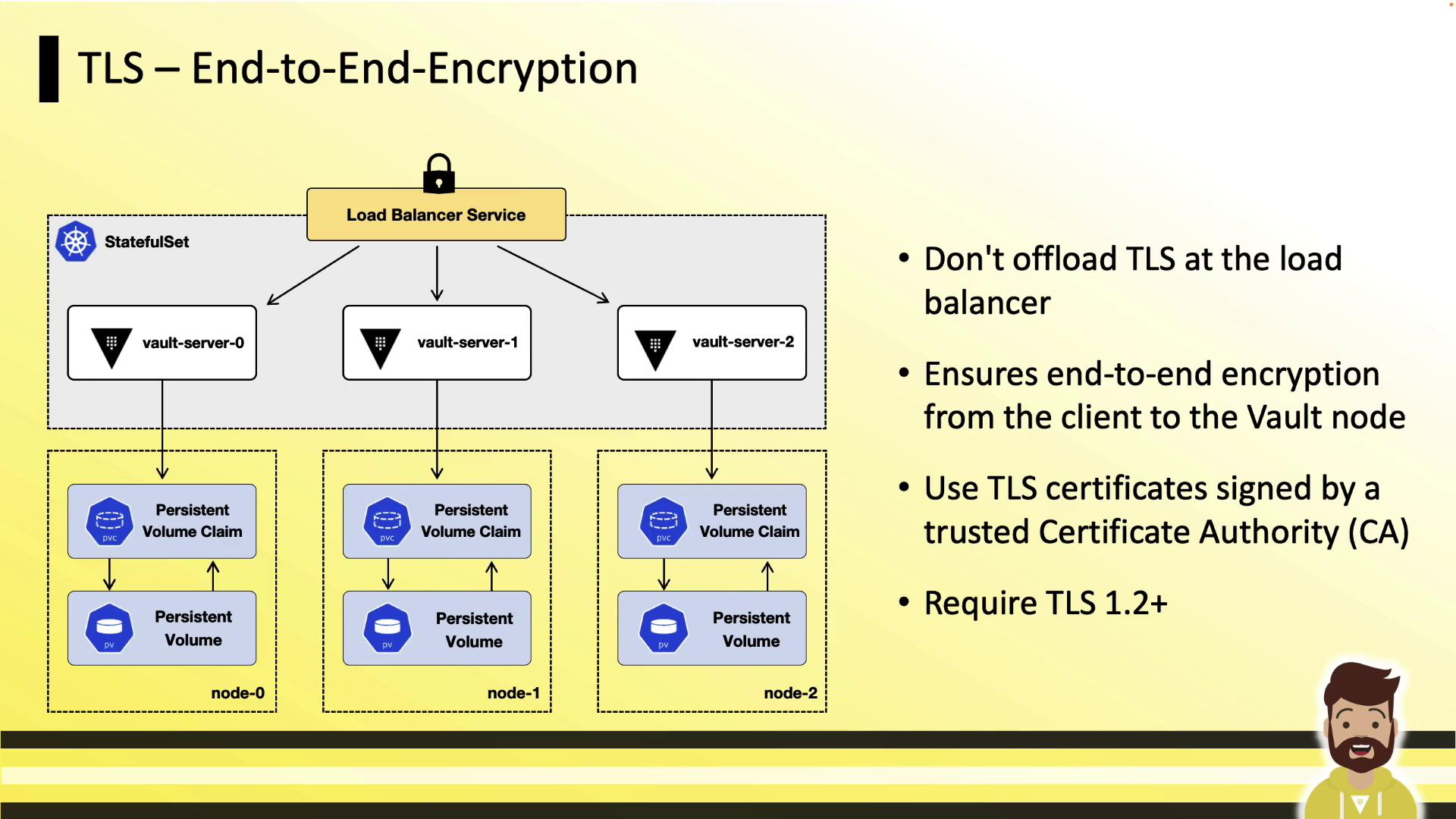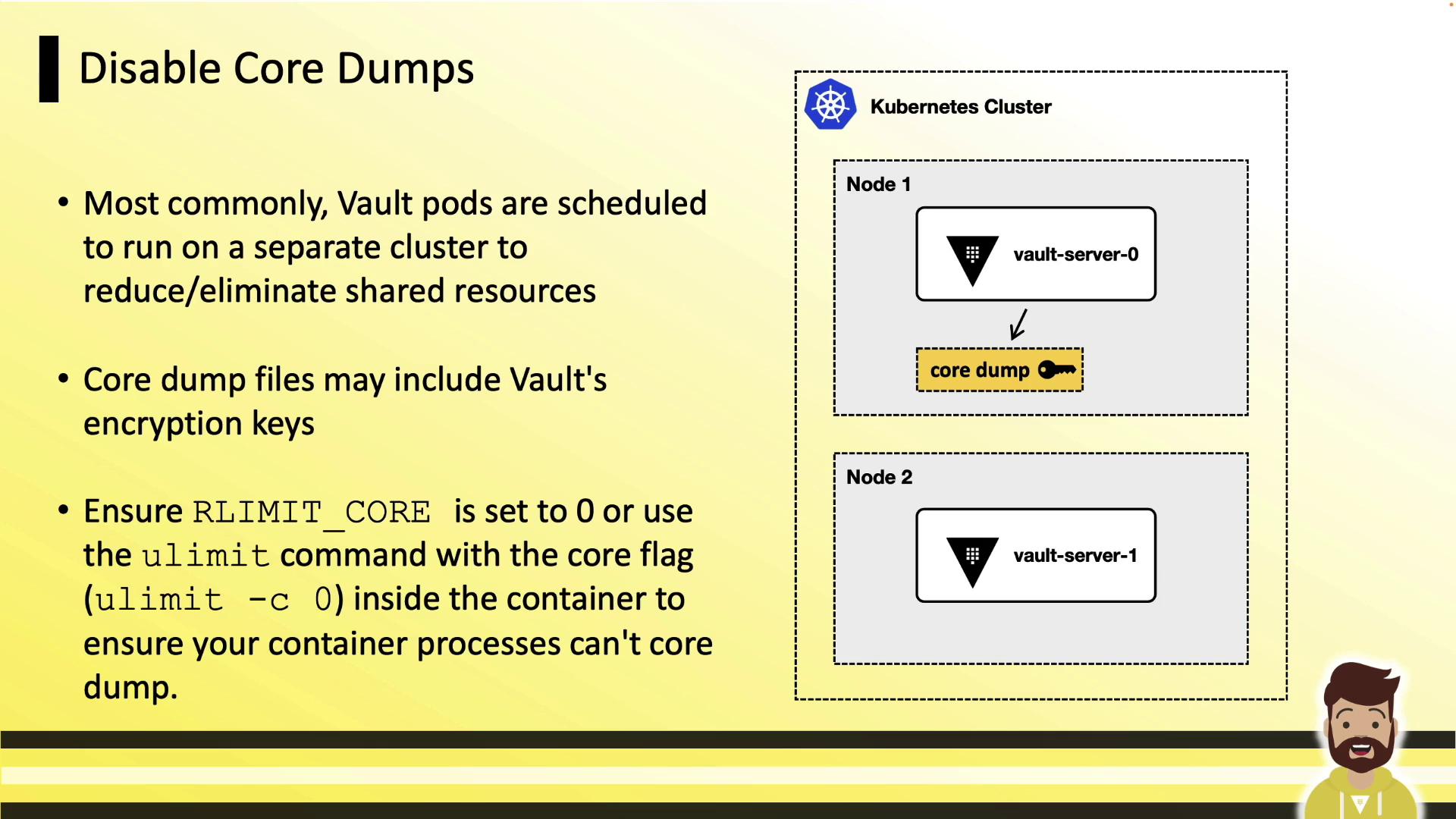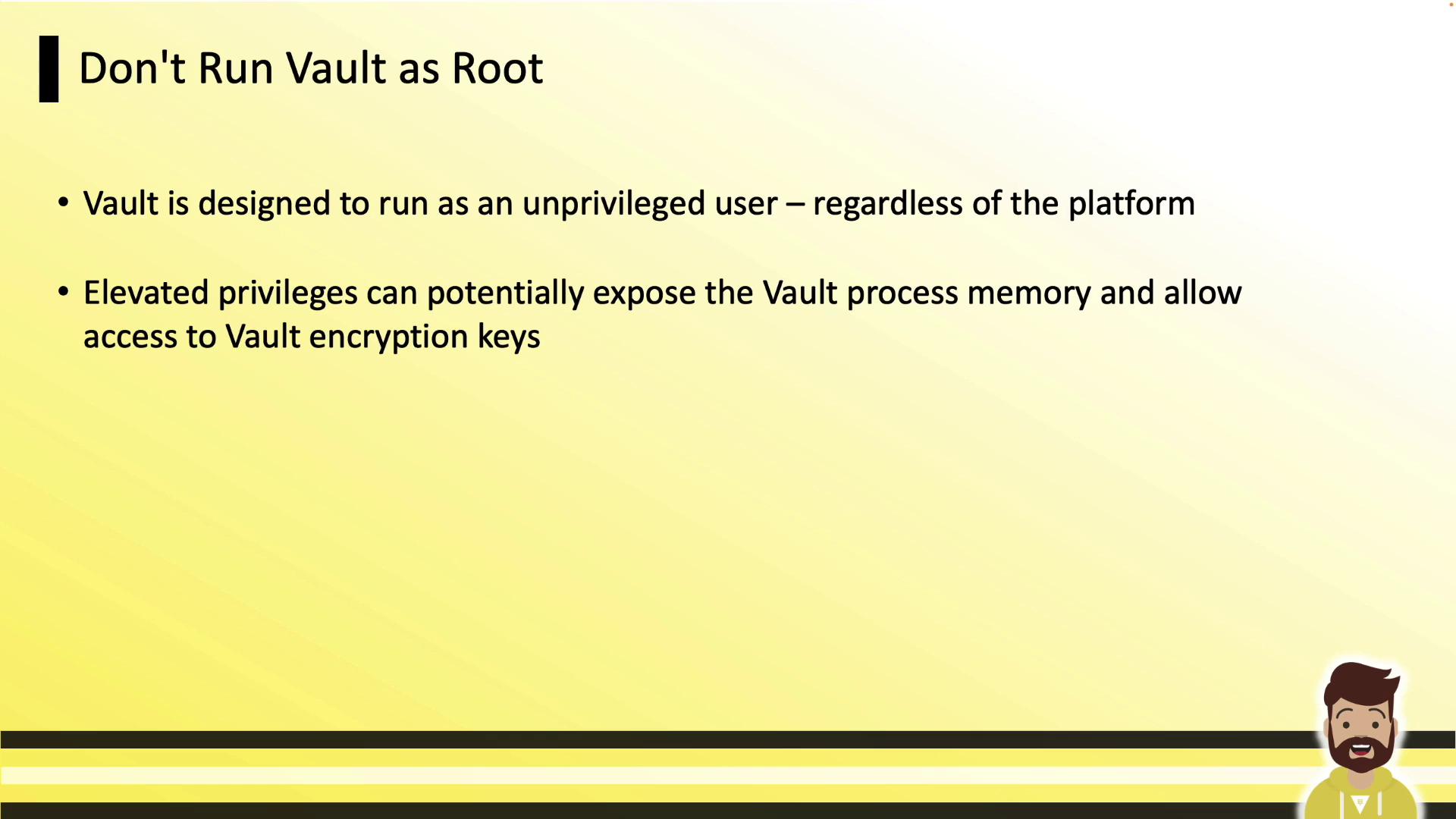HashiCorp Certified: Vault Operations Professional 2022
Employ the Vault Security Model
Running Vault in Kubernetes
In this guide, we explore the security implications and best practices for running HashiCorp Vault on Kubernetes platforms like EKS, AKS, GKE, and OpenShift. While Vault’s default security model targets VMs or bare metal, containerized deployments require extra hardening. The easiest way to get started is with the official Helm chart—just provide your custom values and install.
Deploying with the Official Helm Chart
To install Vault using Helm:
helm repo add hashicorp https://helm.releases.hashicorp.com
helm repo update
helm install vault hashicorp/vault \
--namespace vault \
--create-namespace \
--values my-vault-values.yaml
This chart supports high availability, integrated storage backends, TLS, and more. Customize my-vault-values.yaml to enable mlock, non-root execution, and other hardening options.
TLS End-to-End Encryption
Ensure that all traffic between clients, load balancers, and Vault pods is encrypted with TLS 1.2 or higher. Do not terminate TLS at the load balancer; instead, use TLS passthrough so that Vault pods handle the certificate handshake.
Note
Configure your cloud load balancer for TCP passthrough to maintain end-to-end encryption. This prevents cleartext traffic from ever reaching your Vault pods.

Use certificates signed by a trusted CA, enforce TLS 1.2+, and mount each Vault pod’s certificate and private key via a Kubernetes Secret and a PersistentVolumeClaim.

Disable Core Dumps
Core dumps can inadvertently capture Vault’s in-memory encryption keys. Disable them at the kernel and container levels:
# Disable core dumps on the host
ulimit -c 0
In your Pod spec security context:
securityContext:
runAsNonRoot: true
runAsUser: 1000
capabilities:
add: ["IPC_LOCK"]
resources:
limits:
core: 0
Warning
A core dump could expose sensitive encryption keys. Always set RLIMIT_CORE to 0 in your containers.

Enable mlock
Prevent Vault’s memory from being swapped to disk by granting the IPC_LOCK capability. This ensures in-memory encryption keys never hit swap:
securityContext:
runAsNonRoot: true
runAsUser: 1000
capabilities:
add: ["IPC_LOCK"]
Run as Non-Root & Read-Only Filesystem
Running Vault as root increases risk if a container escape occurs. Enforce non-root execution and mount the filesystem read-only:
apiVersion: v1
kind: Pod
metadata:
name: vault-server
spec:
containers:
- name: vault
image: vault:latest
securityContext:
runAsNonRoot: true
readOnlyRootFilesystem: true
capabilities:
add: ["IPC_LOCK"]

Security Context Cheat Sheet
| Feature | Configuration Snippet | Purpose |
|---|---|---|
| Disable Core Dumps | limits.core: 0 | Prevents writing memory dumps to disk |
| Enable mlock | capabilities.add: ["IPC_LOCK"] | Locks memory to avoid swapping |
| Non-Root Execution | runAsNonRoot: true<br/>runAsUser: 1000 | Reduces attack surface in container |
| Read-Only Root Filesystem | readOnlyRootFilesystem: true | Prevents unwanted file modifications |
Additional Best Practices
- Deploy Vault on a dedicated Kubernetes cluster.
- Minimize enabled auth methods and secrets engines.
- Keep token TTLs short and prune unused policies regularly.
- Ensure Vault is the main process (PID 1) in each container, so it receives signals properly.
For a deeper dive, see the
HashiCorp Learn tutorial on running Vault in Kubernetes.
Other useful references:
Watch Video
Watch video content